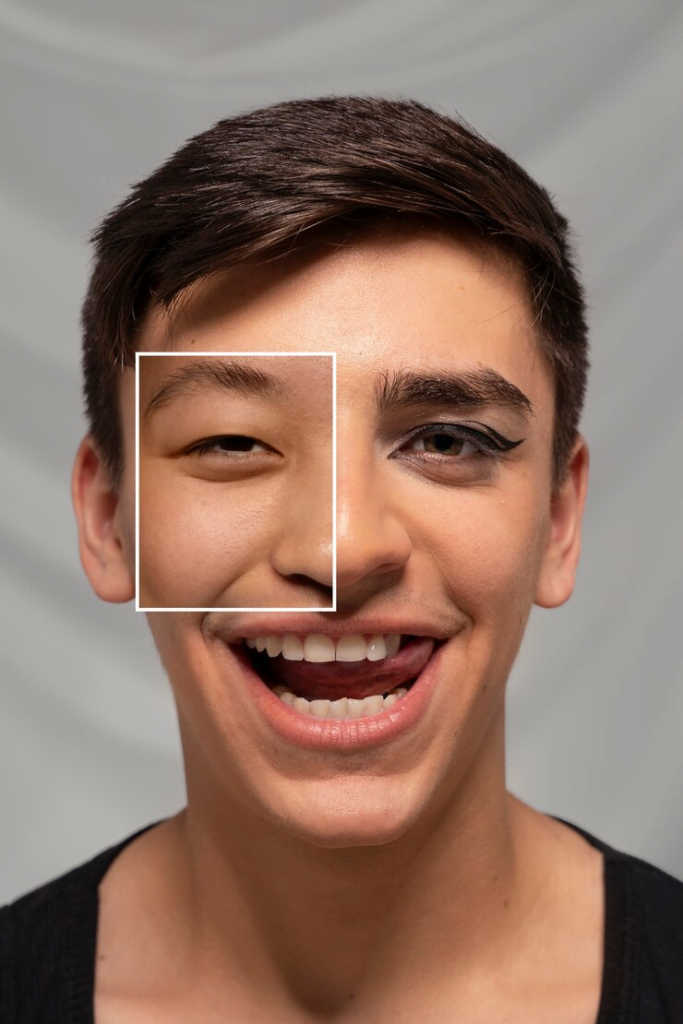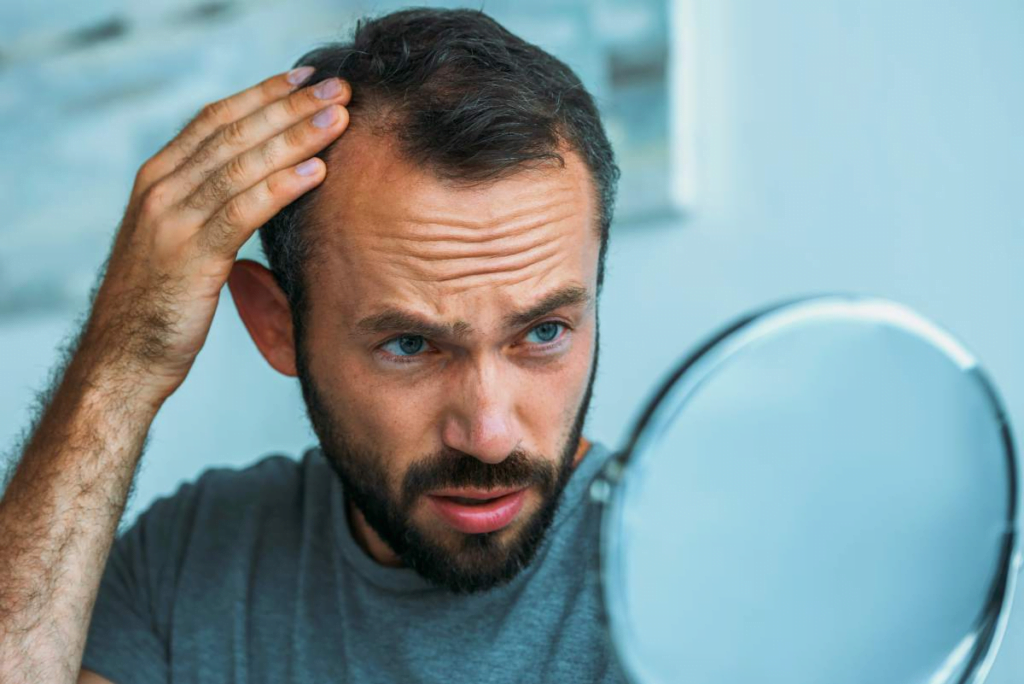Have you been contemplating facial feminization surgery (FFS) to achieve a more feminine facial appearance? If so, you’ve likely encountered the question of hair transplant before/after FFS. This decision can significantly impact your final results, so understanding the timing implications is crucial. Will a hair transplant enhance your FFS outcome? Should it be done beforehand, or can it wait? Delve into this guide to uncover the strategic advantages and potential drawbacks of each approach.

İçindekiler
Unveiling the Timeline: Hair Transplant Before/After FFS
Considering facial feminization surgery (FFS) to achieve a more feminine facial appearance? Hair transplant before/after FFS is a crucial decision impacting your final outcome. This guide dissects the timing implications, exploring the advantages and potential drawbacks of each approach.
Should I get a hair transplant before FFS?
There’s no one-size-fits-all answer. Here are factors to consider:
- Hairline Concerns: A high, M-shaped hairline can contribute to a masculinized appearance. Hair transplant before FFS allows surgeons to create a more feminine hairline, lowering it and framing the face for a harmonious look.
- Facial Feature Harmony: FFS procedures like forehead reduction can alter the existing hairline. Addressing hairline concerns with a hair transplant before FFS ensures a cohesive and natural-looking result.
- Personal Preference: Some individuals prioritize a complete facial transformation and might prefer hair transplant before FFS. This allows them to see the final results with both procedures completed.
Can I get a hair transplant and FFS at the same time?
Yes, in some cases! Combining procedures offers several benefits:
- Reduced Downtime: Recovering from both procedures simultaneously minimizes overall recovery time compared to separate surgeries.
- Streamlined Experience: Undergoing both procedures at the same clinic simplifies logistics and communication with your surgeon.
- Potential Cost Savings: Some clinics may offer combined procedure discounts.
However, this approach isn’t always suitable. Here’s why:
- Complexity: Combining surgeries increases surgical time and potential complications.
- Scalp Scalp Sensitivity: FFS procedures can affect scalp sensitivity, potentially impacting hair transplant graft survival.
- Surgeon Expertise: Not all FFS surgeons perform hair transplants. Finding a clinic with expertise in both procedures is crucial.
Consultation is vital to determine if a combined procedure is safe and ideal for you.
Does FFS surgery affect my hairline?
Yes, some FFS procedures can alter the hairline. Here’s what to consider:
- Forehead Reduction: This procedure aims to shorten the forehead, potentially pushing the hairline forward and requiring a hair transplant to maintain a feminine hairline shape.
- Brow Lift: Lifting the brow can subtly elevate the hairline. Discussing hairline goals with your FFS surgeon is crucial to ensure a harmonious result.
Hair transplant before FFS allows for pre-emptive planning to address potential hairline changes caused by FFS procedures.
Will I need hair removal before FFS if I want a hair transplant later?
Yes, permanent hair removal (laser or electrolysis) might be necessary in the recipient area before a future hair transplant. This ensures optimal graft survival and a natural appearance.
Discuss your desire for a future hair transplant with your FFS surgeon during the consultation. They can advise on areas requiring hair removal to facilitate a future transplant.
What order is best for hair transplant and FFS?
Here’s a breakdown of both approaches:
Hair Transplant Before FFS:
- Ideal for addressing hairline concerns before FFS.
- Allows for pre-emptive planning regarding hairline placement after FFS procedures.
- Provides a clear picture of final facial appearance with both procedures complete.
Hair Transplant After FFS:
- Minimizes potential scalp sensitivity issues affecting graft survival.
- Offers flexibility if hairline concerns arise after FFS recovery.
- May require additional recovery time compared to a combined procedure.
Consultation with a qualified surgeon specializing in both procedures is vital to determine the best order for you.
Are there any risks to getting a hair transplant before FFS?
Hair transplant is a safe procedure, but some potential risks exist:
- Scarring: Although minimal, scarring can occur at the donor and recipient sites.
- Infection: Proper aftercare minimizes infection risk.
- Unnatural Appearance: Choosing an experienced surgeon ensures natural-looking results.
Consultation allows you to discuss these risks and ensure you’re a good candidate for a hair transplant.
How long should I wait between hair transplant and FFS?
Ideally, wait for complete hair transplant recovery before undergoing FFS. This typically takes 6-12 months, allowing for transplanted hair to fully establish itself.
Consultation with both your hair transplant surgeon and FFS surgeon will determine the optimal waiting period based on your individual case.
Can FFS results influence where I need a hair transplant?
Yes, FFS results can alter the areas requiring a hair transplant. For example, forehead reduction may necessitate a hairline advancement transplant.
Consulting an FFS surgeon experienced in hair transplant considerations is crucial for planning both procedures strategically.

Will a hair transplant surgeon specialize in FFS patients?
Not all hair transplant surgeons specialize in FFS patients. Here’s what to consider:
- FFS Knowledge: Understanding the nuances of facial feminization surgery allows the surgeon to tailor the hair transplant to complement the desired outcome.
- Temple Hairline Design: FFS patients often seek a more rounded hairline with a softer temple transition. A surgeon experienced in FFS will be adept at designing a natural-looking hairline for a feminine appearance.
- Scalp Donor Area Considerations: FFS procedures can sometimes impact the scalp area suitable for hair graft extraction. A surgeon familiar with FFS will be able to assess the viability of donor sites.
Seek a hair transplant surgeon with experience working with FFS patients. Look for surgeons who:
- Showcase before-and-after photos of FFS patients who underwent hair transplants.
- Attend conferences or workshops focused on transgender healthcare.
- Have positive patient reviews specifically from transgender individuals.
Does insurance cover hair transplant before FFS?
Typically, hair transplant surgery is considered cosmetic and not covered by insurance. However, some exceptions might exist depending on your specific insurance plan and the reason for the hair transplant.
Consultation with your insurance provider is recommended to understand your coverage details.
Financing options are often available at hair transplant clinics, which can help manage the cost of the procedure.
Remember, prioritizing selecting a qualified and experienced surgeon over cost is crucial for achieving optimal and natural-looking results.
The decision of hair transplant before/after FFS is a personal one. By carefully considering the factors discussed in this guide and consulting with qualified surgeons, you can determine the ideal timeline for achieving your desired facial feminization goals.

Conclusion
In conclusion, navigating the decision of hair transplant before/after FFS requires careful consideration. Understanding your individual goals, potential procedure benefits and drawbacks, and recovery timelines empowers you to make an informed choice.
Hair transplant before FFS allows for pre-emptive planning regarding hairline concerns and provides a clear picture of your final facial appearance. Conversely, waiting for FFS recovery minimizes scalp sensitivity issues and offers flexibility if hairline concerns arise after surgery.
Ultimately, consulting with qualified surgeons specializing in both FFS and hair transplant procedures is vital. Their expertise can guide you towards the optimal timeline for achieving your desired, natural-looking results on your journey of facial feminization.
Ready to embark on your transformation? Schedule consultations with qualified surgeons to discuss your specific goals and explore the possibilities of hair transplant before/after FFS.
Hairtrans.com was founded by world-famous plastic surgeon Dr. MFO, who is an expert in facial feminization or facial masculinization surgeries, and is managed under his leadership. Would you like to have a hair transplant under the coordination of a plastic surgeon with many years of experience?
Whether you are a trans woman or a natural born male or female, if you are looking for the best hair transplant, contact us now.
FAQ
Should I consider a hair transplant before FFS if I have a receding hairline?
Absolutely! Hair transplant before FFS allows surgeons to create a more feminine hairline, framing your face for a harmonious final outcome.
Can I get a hair transplant and FFS surgery at the same time?
Yes, in some cases! Combining procedures offers efficiency, but consult a qualified surgeon to assess if it’s safe and ideal for you regarding hair transplant before/after FFS.
Will FFS surgery change my existing hairline?
Yes, procedures like forehead reduction can alter the hairline. Hair transplant before FFS allows for pre-emptive planning to address these potential changes.
If I want a hair transplant later, will I need hair removal before FFS?
Yes, permanent hair removal might be necessary in the recipient area for optimal hair transplant results later. Discuss this with your FFS surgeon during the consultation.
Is there a “best” order for hair transplant and FFS?
The ideal order depends on your goals. Hair transplant before FFS offers planning advantages, while waiting for FFS recovery minimizes scalp sensitivity concerns. Consult a qualified surgeon for personalized guidance.
Are there any risks associated with getting a hair transplant before FFS?
Hair transplant is a safe procedure, but potential risks like scarring and infection exist. Consultation with a qualified surgeon ensures you’re a good candidate.
How long should I wait between hair transplant and FFS surgery?
Ideally, wait for complete hair transplant recovery (6-12 months) before FFS. Consultations with both surgeons will determine the optimal waiting period for you.
Can FFS results influence where I need a hair transplant?
Yes! FFS procedures like forehead reduction might necessitate a hairline advancement transplant. Consult an FFS surgeon experienced in hair transplant considerations.
Do hair transplant surgeons specialize in FFS patients?
Not all do. Seek a surgeon with knowledge of FFS for a natural-looking, feminine hairline design during your hair transplant before/after FFS procedures.
Does insurance cover hair transplant before FFS?
Typically not, as it’s considered cosmetic. However, consult your provider for specific details. Financing options are often available at hair transplant clinics.


